Main menu
Common skin conditions

NEWS
Join DermNet PRO
Read more
Quick links
Introduction Conditions treated How it works Treatments required Results Precautions Side effects Combination treatments Other conditions
Bathwater PUVA, also called bath-water or balneo-photochemotherapy, is a treatment for skin diseases. It is a type of phototherapy.
PUVA is an acronym: ‘P’ is for psoralen, a medication. It is used in combination with ‘UVA’, or the ultraviolet radiation of wavelength 320–360 nm.
The most commonly prescribed psoralen is methoxsalen (8-methoxypsoralen) but 5-methoxypsoralen and trisoralen are sometimes used. The psoralen may be taken by mouth (orally).
Bathwater PUVA refers to psoralen prescribed in a dilute solution of water, usually 3 mg/L. The part to be treated is soaked in this solution prior to exposure to UVA emitted from special fluorescent lamps.
Bathwater PUVA is used to treat inflammatory skin disorders, mainly:
Whole-body bathwater PUVA is prescribed to treat extensive skin disease but is not widely available because of its expense, inconvenience and risks.
Localised bathwater PUVA is more common. It is most often prescribed for psoriasis or eczema affecting the hands and feet.
The patient soaks in a bathtub of psoralen solution then stands in a whole-body cabinet containing 6-foot fluorescent tubes emitting UVA.
The hands or feet are soaked in a bowl or bucket of psoralen solution and are then exposed to UVA from 2-foot bulbs in a hand-foot box.
The actual duration of treatment will depend on the power of the lamps, the number of lamps, the patient’s skin type, and prior exposure. It may range from less than a minute to half an hour or longer.
The phototherapy staff will measure the output of the lamp and calculate the dose of UVA required. The dose may be increased each visit according to a protocol. The dose will be held the same or reduced if the condition clears, the maximum dose is reached, or side effects such as burning occur.
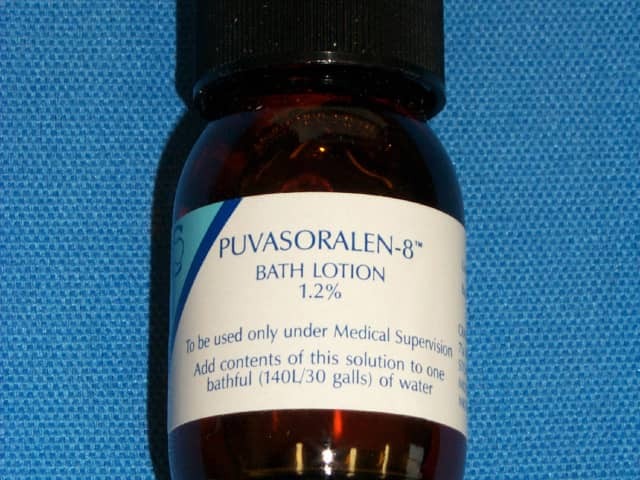
Hands and feet PUVA soaks
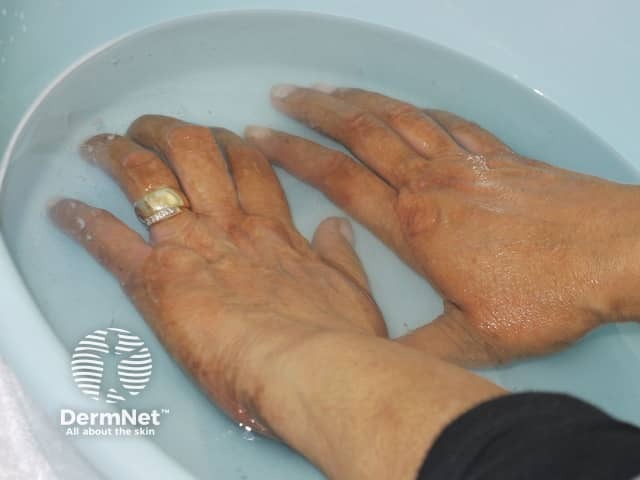
Hands and feet PUVA soaks
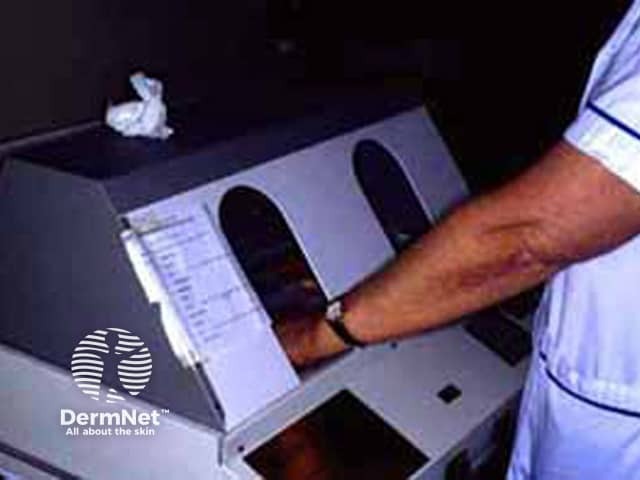
Hands and feet PUVA soaks
Bathwater PUVA is most often carried out two or three times weekly. The number of treatments varies according to the severity of the skin condition and the response to the PUVA. It may range from 10–60 treatments in total.
Treatment is usually stopped when the skin condition has cleared, but maintenance treatments are used in some cases, for example, once weekly.
Bathwater PUVA may also be stopped if it proves ineffective or there are significant adverse effects.
About 60–80% of patients with psoriasis have good results from bathwater PUVA within 20–40 treatments. The success rates for eczema are somewhat lower.
Follow the directions of the phototherapy staff.
The treated areas are expected to be mildly pink after each treatment. The pinkness may last several days and may be accompanied by a temporary prickling or itch. The skin is often dry; apply moisturisers frequently. Tanning usually occurs and is most prominent in darker skin types.
Burning may occur if exposure to UVA has been prolonged. The peak time for burning is 48–72 hours after exposure to UVA. Mildly burned areas may feel itchy and appear red. In severe cases, pain and blistering may occur.
Increased risk of burning occurs in the following circumstances:
In the event of a burn, apply cooling emollients frequently. Anti-inflammatory drugs such as aspirin or ibuprofen may reduce discomfort. It may take several days or longer to recover from PUVA burns as they are more prolonged than normal sunburn.
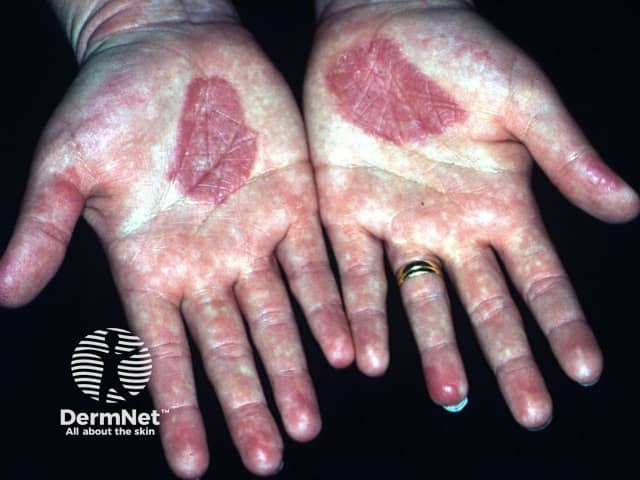
Hands burning after PUVA soaks
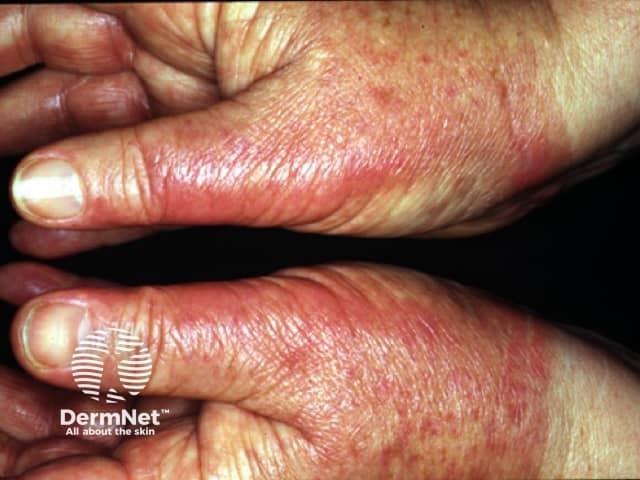
Hands burning after PUVA soaks
Long term, 200 or more treatments with whole-body oral PUVA have been associated with skin cancer, cataracts and skin ageing such as freckles, wrinkles and increased dryness. The risks of bathwater PUVA are unknown.
Bathwater PUVA may be carried out at the same time as other treatments are used for the skin condition. These include topical creams (e.g. corticosteroids for eczema) and oral medicines such as prednisone, acitretin and methotrexate.
Bathwater PUVA is best avoided in those on azathioprine and ciclosporin because these medicines are immunosuppressive and may increase the risk of skin cancer.
Certain topical preparations such as sunscreens and calcipotriol should not be applied to the skin to be treated as they may reduce its effect. Cosmetics and perfumes should also be avoided, as they are phototoxic and may induce severe burns.
Other options may be available to treat your skin condition. Consult your dermatologist for advice.